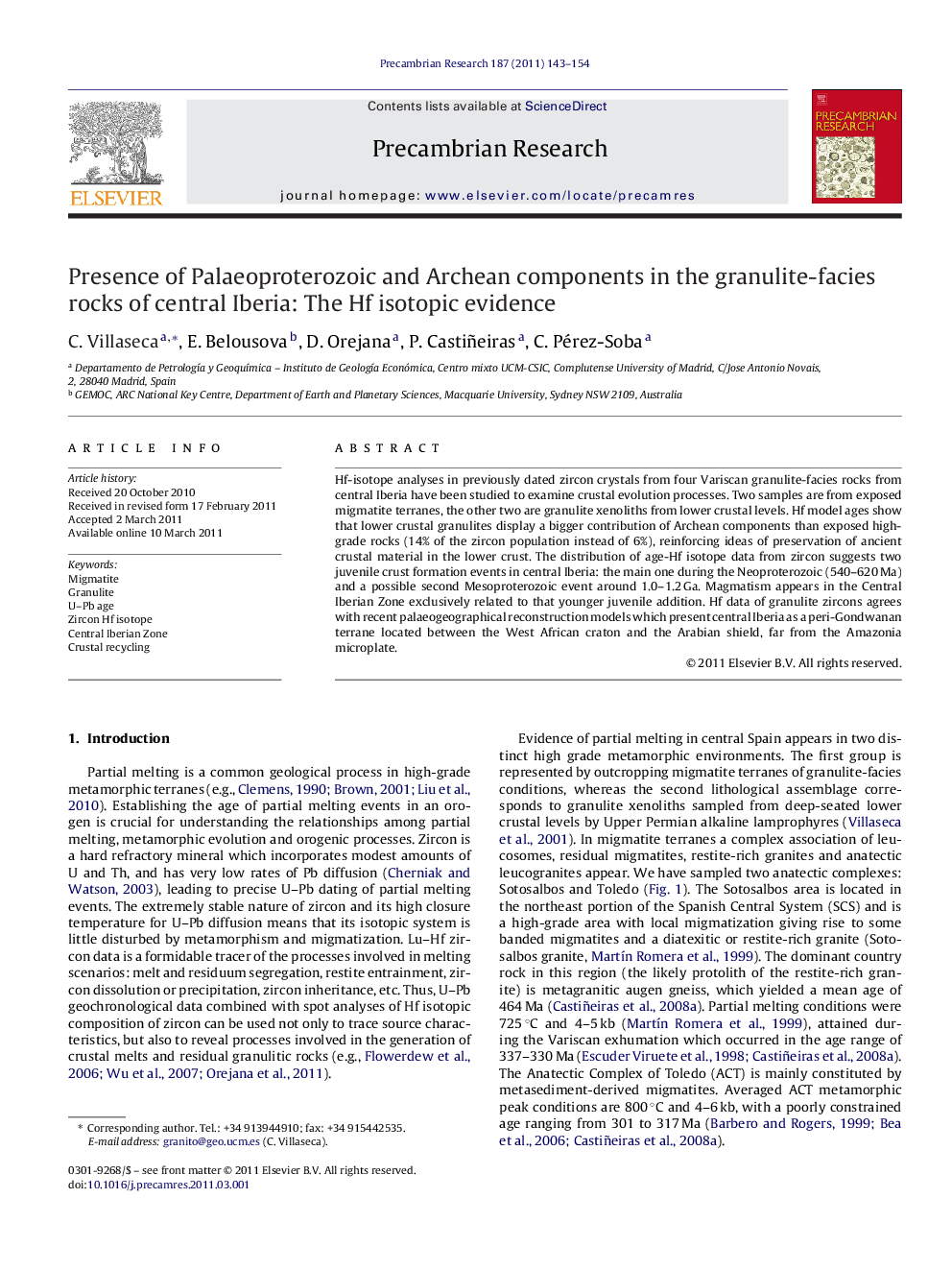| کد مقاله | کد نشریه | سال انتشار | مقاله انگلیسی | نسخه تمام متن |
|---|---|---|---|---|
| 4723842 | 1639670 | 2011 | 12 صفحه PDF | دانلود رایگان |

Hf-isotope analyses in previously dated zircon crystals from four Variscan granulite-facies rocks from central Iberia have been studied to examine crustal evolution processes. Two samples are from exposed migmatite terranes, the other two are granulite xenoliths from lower crustal levels. Hf model ages show that lower crustal granulites display a bigger contribution of Archean components than exposed high-grade rocks (14% of the zircon population instead of 6%), reinforcing ideas of preservation of ancient crustal material in the lower crust. The distribution of age-Hf isotope data from zircon suggests two juvenile crust formation events in central Iberia: the main one during the Neoproterozoic (540–620 Ma) and a possible second Mesoproterozoic event around 1.0–1.2 Ga. Magmatism appears in the Central Iberian Zone exclusively related to that younger juvenile addition. Hf data of granulite zircons agrees with recent palaeogeographical reconstruction models which present central Iberia as a peri-Gondwanan terrane located between the West African craton and the Arabian shield, far from the Amazonia microplate.
► We examine Hf isotopic composition of the granulite-facies zircons from central Iberia.
► They show that variable proportions of juvenile versus older component are involved, with the older component most likely dominated by crust of Palaeoproterozoic and of Archean age.
► The Cadomian (0.5–0.6 Ga) melting event show contribution from juvenile melts.
► The Variscan is dominantly a crustal reworking event.
► Mid-crustal and lower crustal granulites reveal the presence of Archean inherited zircons indicating that an original Archean age for central Iberian basement is a possibility.
Journal: Precambrian Research - Volume 187, Issues 1–2, May 2011, Pages 143–154